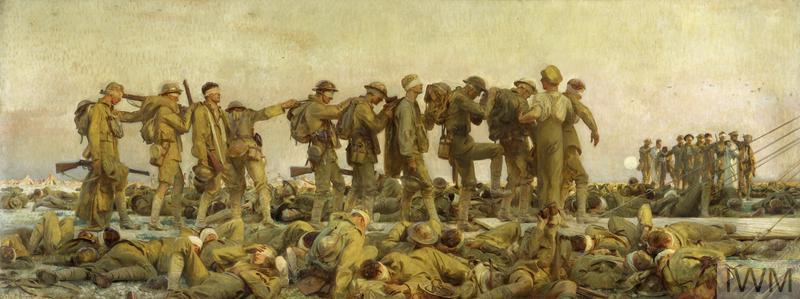Dana Al Fardan’s Music Video, a homage to Fayroz.
A Battle in Illumination: comparing the ARRI HMI M-series and the ARRI Skypanel
By Miri-Joan de Wet
When it comes to film lighting, the wrong light can not only cost the production, but it can also set wrong tone, look unprofessional and create a completely different atmosphere than the one you intended. That’s why it is essential to get this right and where else to start but with the lights themselves.
In this battle of illumination our two competitors are considered the most accomplished and commonly utilised lights in the industry. We will be comparing the ARRI HMI M-series and the ARRI Skypanel. Here you’ll find a comprehensive review of the two types of lights and how you can use them to best illuminate your stories.


Red Dot and Bugatti cars
Last week, the Red Dot team was hired to shoot a video of the rare Bugatti Chiron, of which there are only 30 in the world.

The footages were shot in Barahat Msheireb in the heart of Doha with a Red Helium cinematic camera in a professional manner that matches the value of the supercar.
The Realist Shaping of Meaning in Portraying of War
By Yousif Al Hamadi
Throughout history, artists, writers, musicians, and filmmakers played an essential role in portraying wars. However, when their work became more authentic and realistic, it became difficult to be accepted by the public and the authorities. Generally, this is because of the amount of destruction represented by the bloodshed of wars, such as the paintings created during the French Revolution in the nineteenth century; likewise, the written novels about the invasion of Russia by Napoleon Bonaparte. Similarly, the symphonies composed during the Second World War were filled with grand-sounding intense and explosive sounds reflecting the state. Film directors also used their medium to portray the aftermath of the Second World War in the same sense, such as the Neorealist Italian films.

Engaging and Shaping the Theme of Nationalism in Depicting Wars
By Yousif Al Hamadi
National identity consists of a group of behaviors and values that differentiate members of a country spiritually and culturally. It gives individuals and the collective a meaning of belonging to their nation to feel stable and united, especially during conflicts and wars. The theme of national identity has been represented by painters, writers, and musicians since the romantic era in the late eighteenth and nineteenth centuries in their portrayals of battle in America and Europe. With globalization during the twentieth century, the concept started to be adopted internationally, and filmmakers began to represent it, while filmmaking had just been developed editorially and technically. Furthermore, during the Second World War, propaganda films played an essential role in treating the national identity theme, which had served several nations during wartime as Britain and Germany.

The Impact of Media: Shaping Our Minds and Hearts
By Yousif Al Hamadi
Today, media research includes studies on media effects and media content analysis, which show how people use messages they receive from the media. Major research studies have examined the effects of the media and some of its roles in people’s lives. Media scholars and researchers initially presented theories that showed extreme media power, which directly affected mass consumption. Later, studies and experiments proved that media effects were limited, indirect, or minimal. As a result, they presented other theories that considered human behavior, technology, and the relationship between mass media and mass consumption. Some theories favored the passive audience, others preferred the active audience, and others looked at the cause and connection with the event. Additionally, media scholars and researchers presented cultural media theories where symbolism emerged as a critical element in some of their construction. Others interpreted social and political practices by using the effects of mass media on public opinions and behaviors.

Your imagination is the limit with chroma-keying!
By Miri-Joan de Wet

Are you shooting a scene that requires your character inside a volcano? What about in the middle of the deep, dark sea? Or perhaps even in space? Well, good luck getting all your filming equipment and crew there.
The Architecture of the Ottoman Provinces
By Yousif Al Hamadi
History
The Turks entered Anatolia at the beginning of the 13th century. They are originally Mongol who displaced from Central Asia and headed west to Anatolia after the Battle of Manzikert, in which the Muslims defeated the Byzantine army in 1071.[1] During the 13th century, the Seljuks dynasty of Rum (1077-1308) declined because of the repeated Mongol attacks, and Anatolia has divided into small principalities, to twenty Anatolian beyliks.[2] Osman I (1258-1326), one of the beyliks leaders, whose history is uncertain. However, he was the founder of the Ottoman dynasty. He declared independence from Seljuks in 1299, extended the control of his principality, and eventually conquered Byzantine towns along the Sakarya River.[3] The Ottomans continued to expand, and in a short period, extended their hold over all of Anatolia. In 1453, they captured Constantinople and ended the Byzantine Empire under Mehmed the Conqueror (r. 1444 – 1481), who changed the city’s name to Istanbul.[4]

QFA Ramadan 1442
The Qatar Football Association (QFA) has engaged Red Dot Films to create a 3D animated film for Ramadan 1442.
OX Fitness
A User experience Video. It was treated in a very creative and completely out of the box style. Rather than making the users sit and talk to the camera, Red Dot used their voices and added them to the videos of them working out. Lulou Al Fardan composed the track for the video.